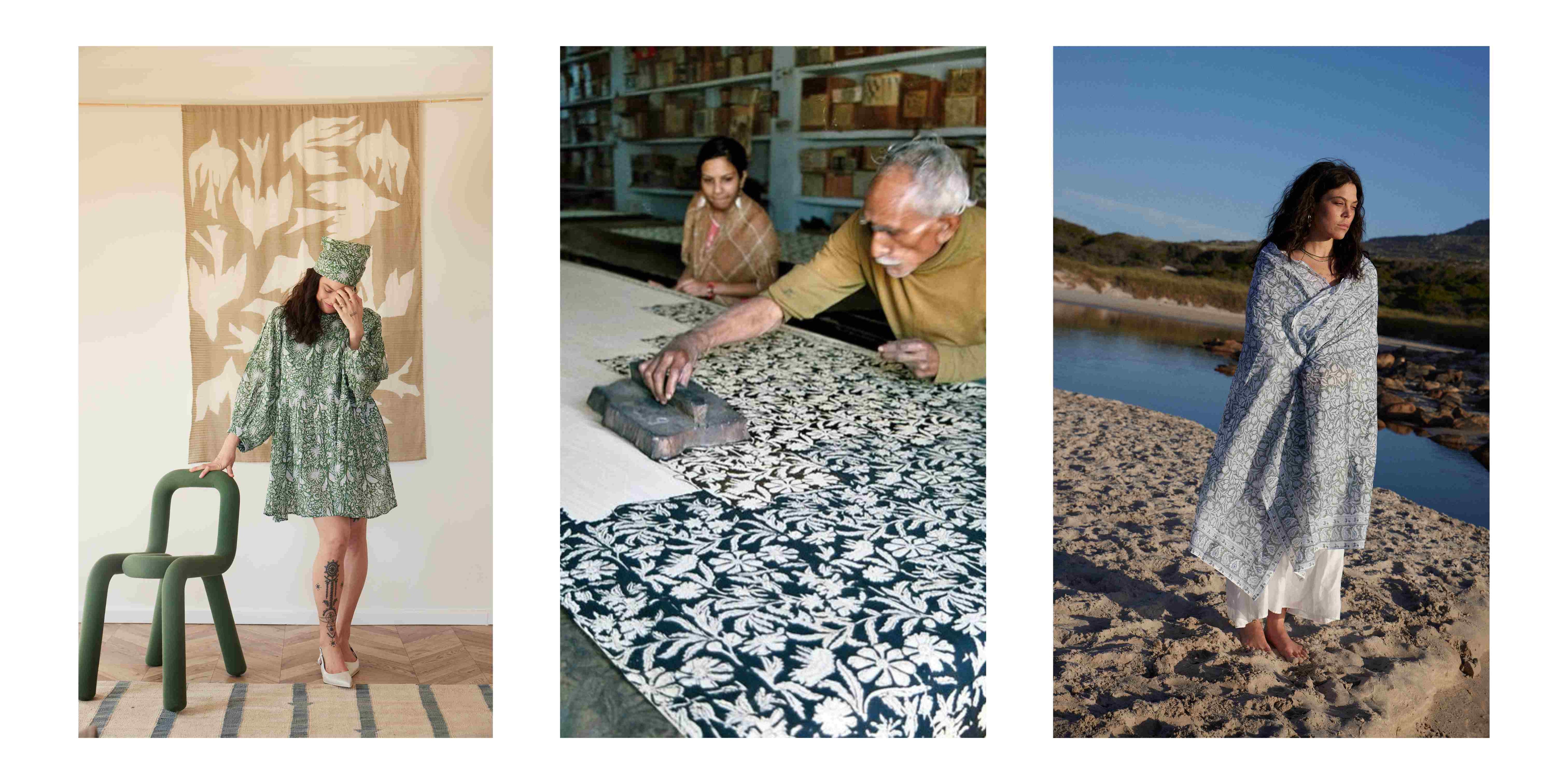The block-printing process is both labour-intensive and delicate. Here’s how it works:
-
Designing the Block: Skilled artisans carve designs into wooden blocks, often from teak or other durable woods. The block’s surface becomes the inverse of the final print, with raised areas transferring ink to the fabric.
-
Preparing the Fabric: The fabric is washed and dried to remove any impurities, ensuring the colors adhere well. It’s then stretched out on a flat surface, ready for printing.
-
Applying the Ink: Artisans dip the wooden block into dye or ink and carefully press it onto the fabric. With each press, they create a section of the pattern. This step is repeated, block by block, until the entire fabric is covered in the desired design.
-
Setting the Print: Once the design is complete, the fabric is dried and sometimes heat-treated to set the colors. In many cases, multiple blocks are used to layer different colors and add depth to the design.
The beauty of block printing lies in its imperfections—each piece is slightly different, revealing the hand of the artist behind it. No two prints are identical, which is what makes block-printed textiles so special and unique.
The Outcome: Artful Garments
The result of this meticulous process is a garment that tells a story. The slight variations in pattern, the rich, natural dyes, and the handmade nature of the fabric all contribute to the uniqueness of each piece. At Studio Duo, we embrace these individual touches, knowing they reflect the personal attention and care that went into each creation. Block-printed garments offer a connection to the artisan, to history, and to the earth itself through the use of natural materials and traditional methods.
Why Block Printing is So Special
What sets block printing apart is not just its stunning visual outcome, but the heart and heritage behind it. This art form celebrates the intersection of craft and culture, where creativity meets centuries-old traditions. In a world of fast fashion and mass production, block printing is a reminder of the beauty that comes from slowing down and valuing the handmade.


